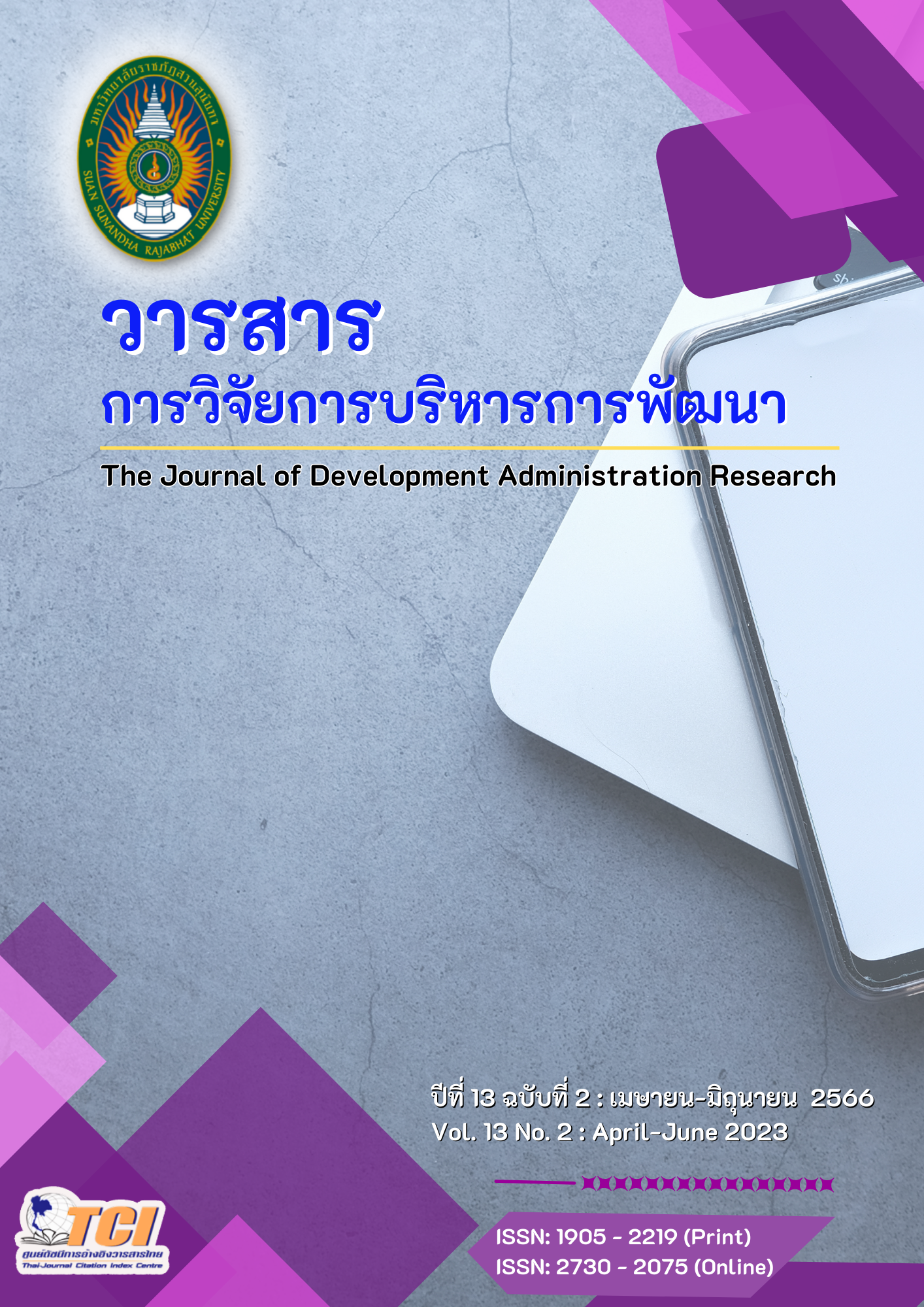The Reverse Logistics Processing Development of Auto parts Industries in Thailand
คำสำคัญ:
Reverse Logistics, Processing Development, Auto Parts Industries, Thailandบทคัดย่อ
This study's objectives were; 1) to study the reverse logistics processing development of auto parts industries in Thailand, 2) to develop a model of the reverse logistics processing development of auto parts industries in Thailand. The unit of analysis is the auto parts industries in Thailand. The questionnaire-based survey applied to a sample of 368 auto parts industries in Thailand from tier-1 auto parts makers, tier-2 auto parts makers, and tier-3 auto parts makers using a multinomial logit model. The statistics were to identify factor with confirmatory factor analysis; one-way ANOVA used to define different factors and relative factors affecting the reverse logistics processing development of auto parts industries in Thailand that can predict the results using multinomial logit modeling for predicting choice behavior of the reverse logistics processing development of auto parts industries in Thailand.
The results revealed that: 1) the factors affect the reverse logistics processing development of auto parts industries in Thailand. The nine elements are recovery accumulating, warehouse management, green operating, transportation, internal reverse logistics, economics operating, environmental awareness, cooperation in reverse logistics, and reverse logistics management systems. 2) The tier-1 auto parts maker has reverse logistics processing development, the second is the tier-2 auto parts maker, and the third is the tier-3 auto parts maker. The result of this study is to enhance the efficiency and effectiveness of auto parts industries in Thailand and determine public policy direction for the competitive advantages in the global market.
เอกสารอ้างอิง
Automotive Information Center (2017). State of the automotive industry. Retrieved from http://data.thaiauto.or.th.Thailand
Automotive Institute, Automotive and Auto Parts Industry, (Online). (2017). Available: http://www.thaiauto.or.th/Automotive Industry Action Group (AIAG). The Business Case for ANX Service.Available at: http://www.anxo.com/TP_SP/papers/TEL-3.pdf.
Awasthi, Amit& Singh, Nirankar& Mittal CchemFrsc, Susheel& Gupta, Prabhat&Agarwal, Ravinder. (2010). Effects of agriculture crop residue burning on children and young on PFTs in North West India. The Science of the total environment, 408, 4440-5.
Chan, Felix & Chan, H. & Jain, Vipul. (2011). A framework of reverse logistics for the automobile industry.International Journal of Production Research - INT J PROD RES,50,1-14.
Fleischmann, M., et al. (2001). The Impact of Product Recovery on Logistics Network Design.Production and Operations Management,10,156-173.
Gan, Lin. (2003). Globalization of the automobile industry in China: Dynamics and barriers in greening of the road transportation. Energy Policy,31, 537-551.
Guide, Daniel &Teunter, Ruud & Van Wassenhove, Luk. (2003). Matching Demand and Supply to Maximize Profits from Remanufacturing.Manufacturing & Service Operations Management, 5, 303-316.
Jain, V.K. and Sharma, S. (2012). Green Supply Chain Management Practices in Automobile Industry: An Empirical Study. Supply Chain Management Systems, 1(3).
Kumar, Sameer & Putnam, Valora. (2008). Cradle to cradle: Reverse logistics strategies and Opportunities across three industry sectors. International Journal of Production Economics,115, 305-315.
Ondemir, Onder&Ilgin, Mehmet Ali & Gupta, Surendra. (2012). Optimal End-of-Life Management in Closed-Loop Supply Chains Using RFID and Sensors.Industrial Informatics, IEEE Transactions, 8, 719-728.
Olugu, Ezutah& Wong, Kuan& M Shaharoun, Awaluddin. (2011). Development of key performance measures for the automobile green supply chain. Resources Conservation and Recycling – Resour ConservRecycl, 55, 567-579.
Shankar, Ravi. (2015). Survey of reverse logistics practices in manufacturing industries: An Indian context. Benchmarking: An International Journal, 22, 874-899.
Tibben-Lembke S. Ronald and Rogers S. Dale.(2002). Differences between forward and reverse logistics in a retail environment, Supply Chain Management: An International Journal, 7(5), 271-282.
Zhu.Q., Sarkis. J. & Geng. Y. (2005). Green supply chain management in China: pressure, practices and performance. International Journal of Operations and Production Management; 2005; 25, 5/6
Zhu.Q. Sarkis.J.and Lai K. (2008). Green supply chain management implications for “closing the loop” Transportation Research. Part E44 (2008) 1-18.
ดาวน์โหลด
เผยแพร่แล้ว
รูปแบบการอ้างอิง
ฉบับ
ประเภทบทความ
สัญญาอนุญาต
ลิขสิทธิ์ (c) 2023 วารสารการวิจัยการบริหารการพัฒนา

อนุญาตภายใต้เงื่อนไข Creative Commons Attribution-NonCommercial-NoDerivatives 4.0 International License.
บทความที่ได้รับการตีพิมพ์เป็นลิขสิทธิ์ของมหาวิทยาลัยราชภัฏสวนสุนันทา
ข้อความที่ปรากฏในบทความแต่ละเรื่องในวารสารวิชาการเล่มนี้เป็นความคิดเห็นส่วนตัวของผู้เขียนแต่ละท่านไม่เกี่ยวข้องกับมหาวิทยาลัยราชภัฏสวนสุนันทา และคณาจารย์ท่านอื่นๆ ในมหาวิทยาลัยฯ แต่อย่างใด ความรับผิดชอบองค์ประกอบทั้งหมดของบทความแต่ละเรื่องเป็นของผู้เขียนแต่ละท่าน หากมีความผิดพลาดใดๆ ผู้เขียนแต่ละท่านจะรับผิดชอบบทความของตนเองแต่ผู้เดียว




